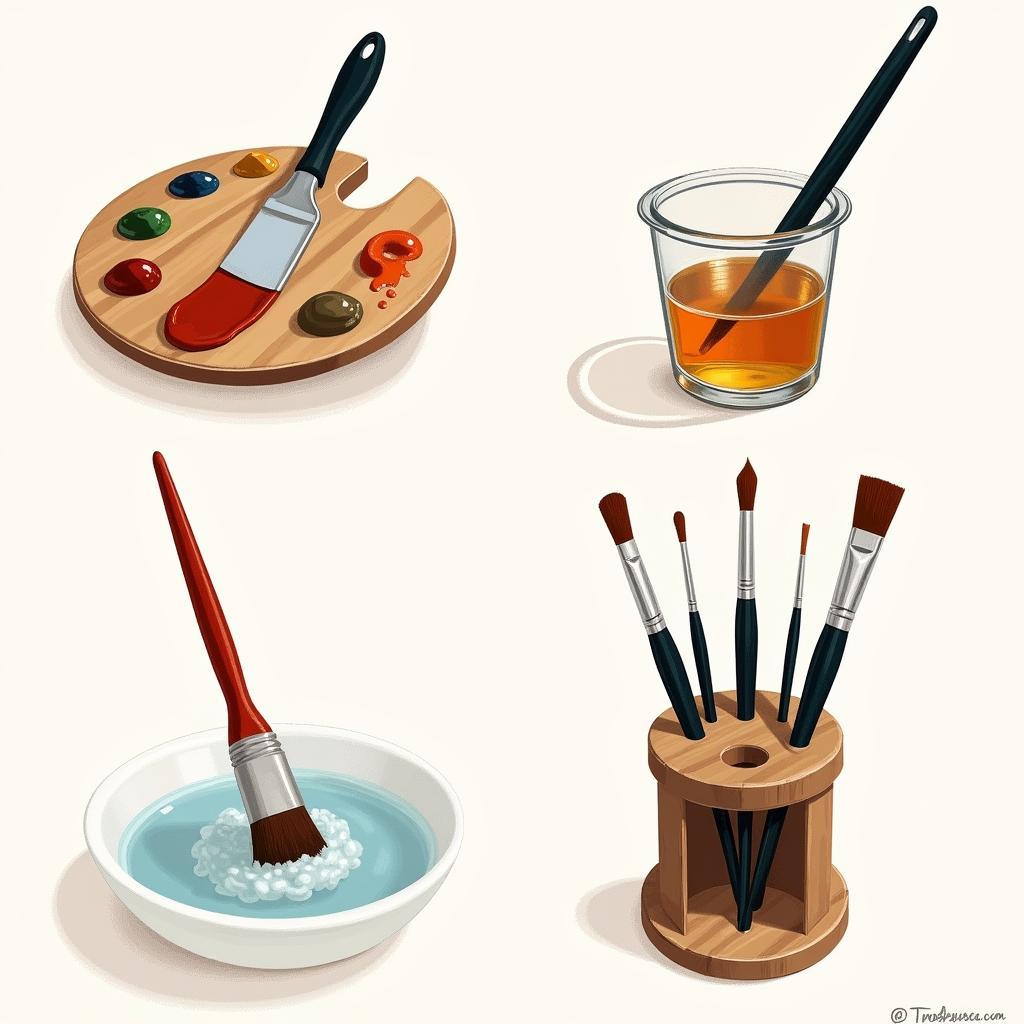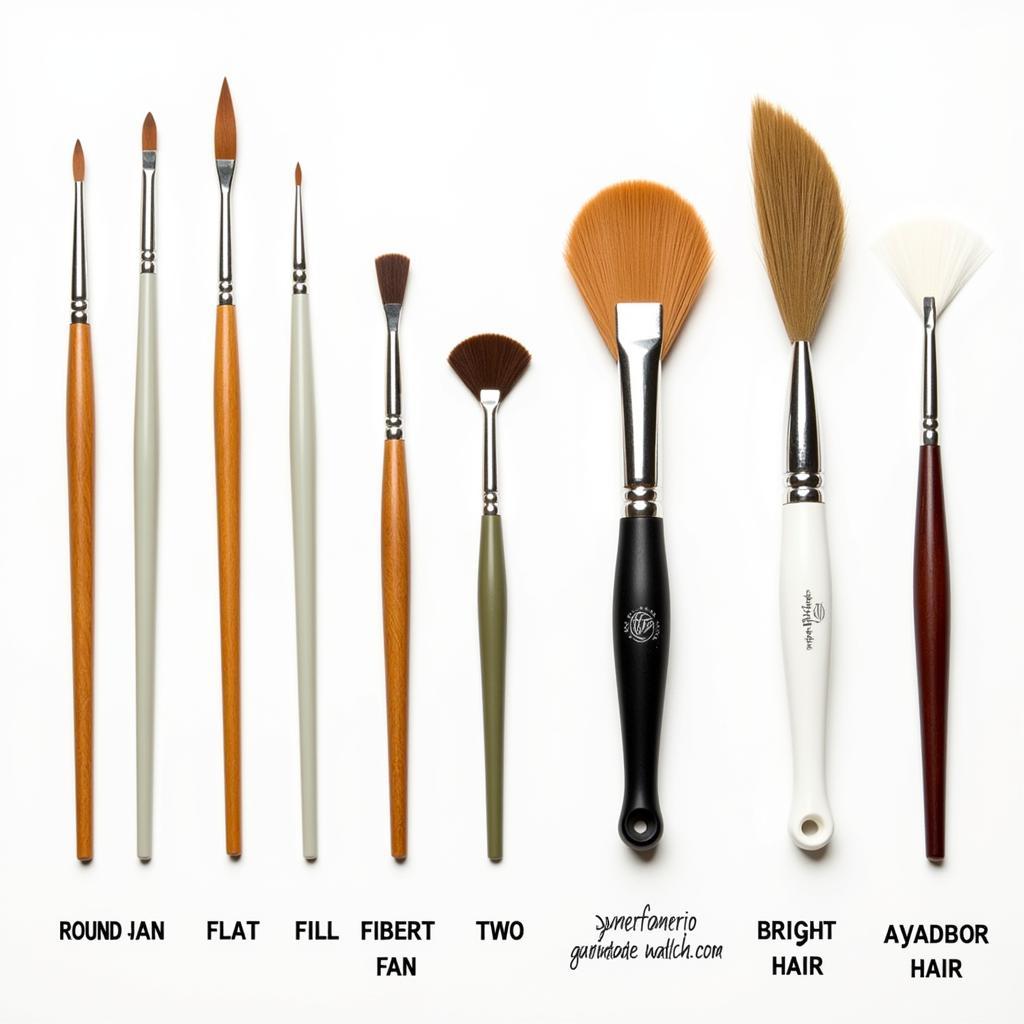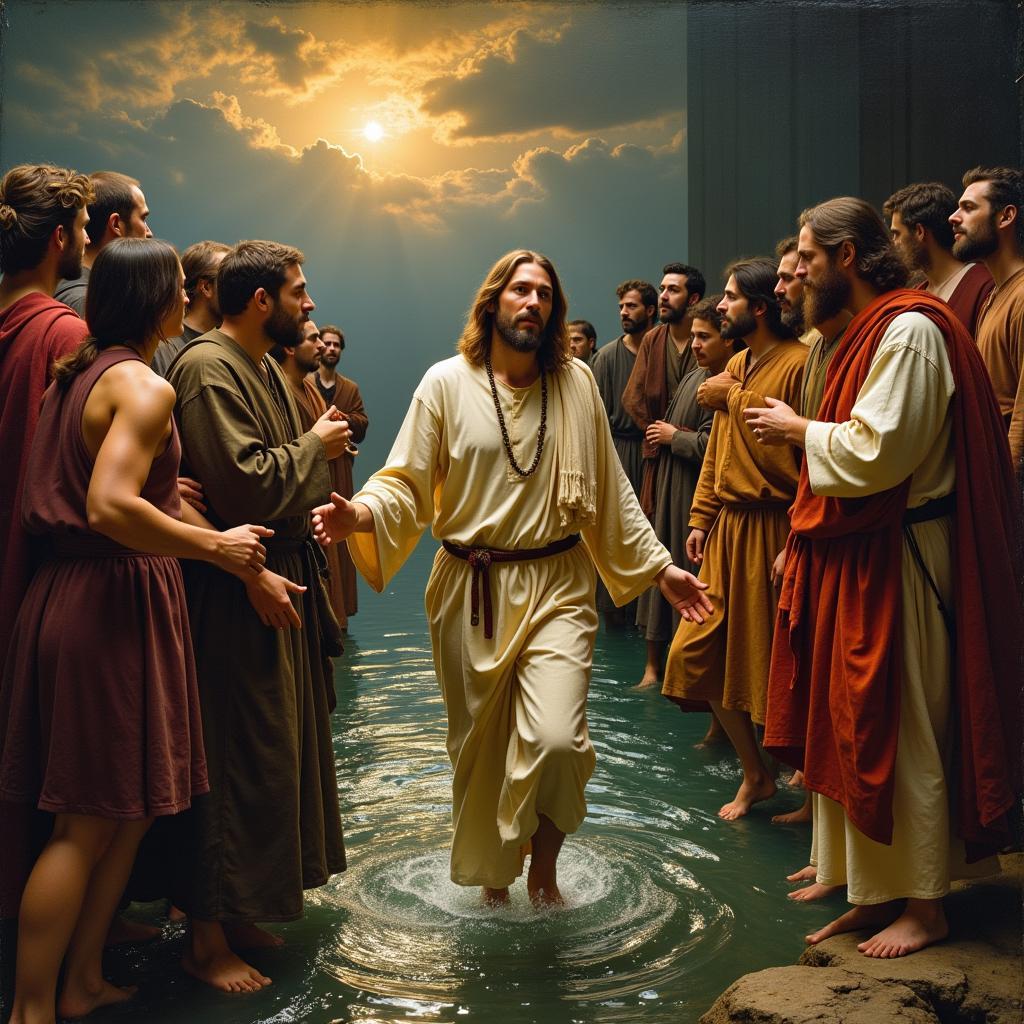Mastering Oil Art Brushes: A Comprehensive Guide
Oil Art Brushes are essential tools for any aspiring or professional oil painter. They bridge the gap between your creative vision and the canvas, enabling you to manipulate the rich, vibrant colors of oil paints to create stunning works of art. From understanding the different types of brushes to mastering various brush techniques, this guide will equip you with the knowledge you need to confidently wield your oil art brushes and unlock your artistic potential. After reading this, you might want to consider a table top art easel for your next oil painting project.
Choosing the Right Oil Art Brushes: A Deep Dive
Selecting the right oil art brushes can feel overwhelming with the plethora of options available. Understanding the different shapes, sizes, and bristle types is crucial for achieving specific effects and textures. Broad brushes are ideal for covering large areas and creating bold strokes, while round brushes are perfect for detail work and fine lines. Fan brushes, with their unique shape, can be used for blending, creating textures, or adding delicate details like foliage. Filbert brushes, with their rounded, flat shape, offer versatility for both blending and creating sharp edges.
Bristle type also plays a significant role. Natural hair brushes, like hog bristle, offer excellent paint holding capacity and create a textured effect, making them ideal for impasto techniques. Synthetic brushes, typically made of nylon or polyester, are more durable and easier to clean, making them a good choice for beginners or for working with water-mixable oil paints.
Oil Art Brush Techniques: Unleashing Your Creativity
Beyond choosing the right brush, mastering various brush techniques is paramount to achieving your desired artistic expression. Dry brushing, a technique where the brush is loaded with minimal paint, creates a broken, textured effect. Scumbling, where a thin layer of opaque paint is applied over a dried layer, allows underlying colors to show through, adding depth and complexity. Stippling involves applying paint in small dots, creating a unique texture and allowing for precise color application.
Experimenting with different brushstrokes and pressures can also dramatically alter the final result. A light touch can create delicate lines and soft blends, while applying more pressure can result in bold, textured strokes. By exploring these techniques, you can discover your unique artistic voice and bring your vision to life.
Remember, practice is key. Experiment with different brushes and techniques to discover what works best for you and your artistic style.
Cleaning and Caring for Your Oil Art Brushes
Proper cleaning and care are essential to prolonging the life of your oil art brushes. After each painting session, remove excess paint using a palette knife or rag. Then, clean the brushes thoroughly with a solvent such as turpentine or mineral spirits, followed by a gentle wash with mild soap and water. Ensure all traces of paint and solvent are removed, as residue can damage the bristles. Reshape the bristles and allow the brushes to dry completely before storing them upright in a jar or brush holder.
 Proper Cleaning of Oil Painting Brushes
Proper Cleaning of Oil Painting Brushes
What are the best oil art brushes for beginners?
For beginners, synthetic brushes are often recommended due to their durability and ease of cleaning. A good starter set would include a variety of round, flat, and filbert brushes in different sizes. This allows for exploration of different techniques without a significant investment. As you progress, you can begin to incorporate natural hair brushes into your collection.
What are the different types of oil art brushes available?
Oil art brushes come in a wide array of shapes, sizes, and bristle types. Common shapes include round, flat, filbert, fan, and bright. Bristles can be natural hair (hog, sable, ox) or synthetic (nylon, polyester). Each type offers unique characteristics and is suited for specific techniques.
How do I choose the right size oil art brush?
Choosing the right size brush depends on the scale of your painting and the level of detail you’re working on. Larger brushes are suited for covering large areas and creating broad strokes, while smaller brushes are ideal for detail work and fine lines.
 Different Types of Oil Painting Brushes
Different Types of Oil Painting Brushes
Are expensive oil art brushes worth it?
While higher-quality brushes generally offer better performance and longevity, it’s not always necessary to invest in the most expensive options, especially when starting out. As your skills develop and your artistic needs evolve, you can gradually upgrade your brush collection. You might be interested in art supplies for teens to get started.
Oil Painting Brushes: A Journey of Artistic Discovery
Oil art brushes are not merely tools; they are extensions of your artistic vision. By understanding their nuances and mastering their use, you can unlock a world of creative possibilities. Embark on this journey of exploration, experimentation, and discovery, and allow your oil art brushes to guide you in expressing your unique artistic voice. For inspiration, take a look at some joaquin phoenix joker art. You can also explore canvas art kit options to find the perfect canvas for your next masterpiece. If you’re drawn to ocean themes, check out abstract surf art for some exciting ideas.
FAQ
- How often should I clean my oil art brushes?
- What is the best way to store oil art brushes?
- Can I use water-mixable oil paints with traditional oil art brushes?
- What are the signs that my oil art brushes need replacing?
- How do I prevent my oil art brushes from losing their shape?
- What is the difference between hog bristle and sable brushes?
- Where can I find high-quality oil art brushes?
When you need assistance, please contact us by Phone: 02462573573, Email: danteum@gmail.com Or visit us at: Savico Megamall, 7-9 Đ. Nguyễn Văn Linh, Gia Thụy, Long Biên, Hà Nội 10000, Việt Nam. We have a 24/7 customer service team.


